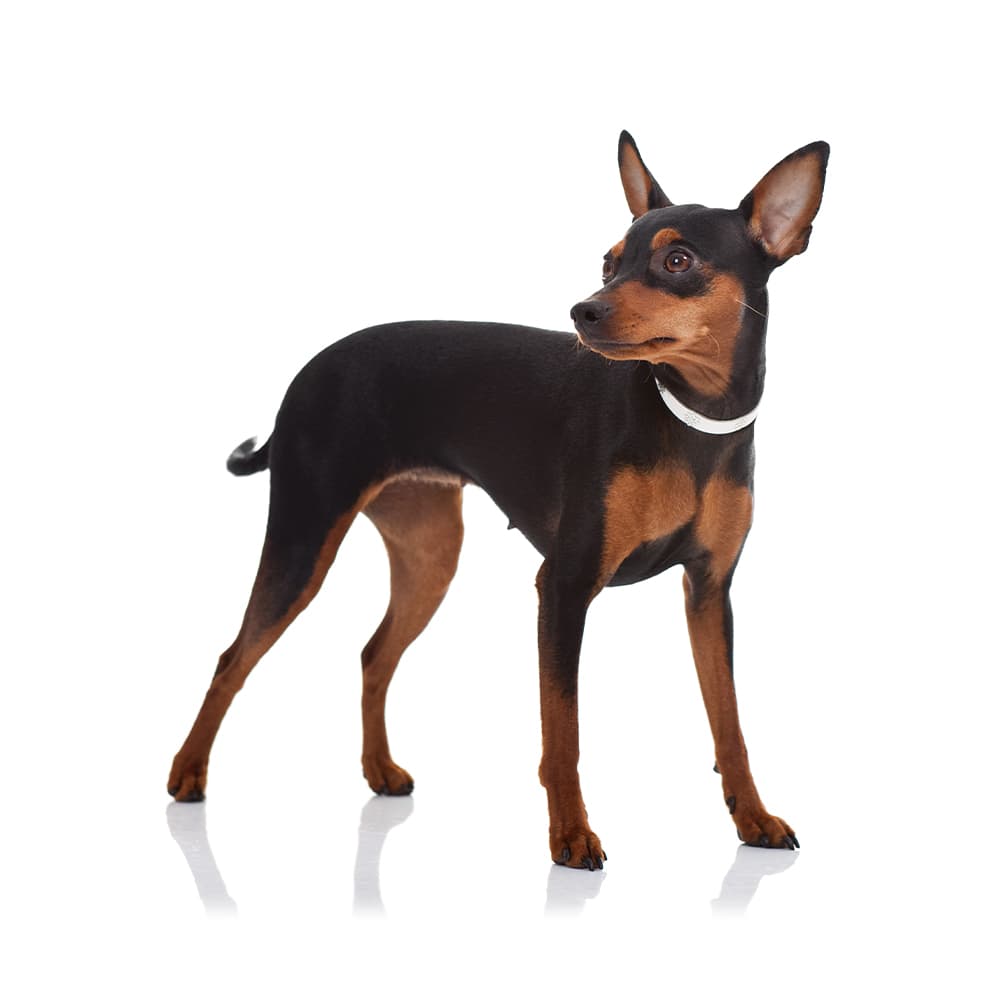Discover your dog's connection to this breed and 200+ others



Discover your dog's connection to this breed and 200+ others


Despite the Miniature Pinscher's striking resemblance to the Doberman Pinscher, they are not a miniaturized version of the Doberman. In fact, the Miniature Pinscher is the older of the two breeds. The breed originated in Germany, where it was used for many years to control the rat population in homes and stables. It's a combination of the Italian Greyhound, Dachshund, and German Pinscher. The breed was first recognized by the American Kennel Club (AKC) in 1925.
Miniature Pinschers can be affected by a range of health conditions, including color dilution alopecia, cystinuria, deafness, demodicosis, diabetes mellitus, eclampsia, epilepsy, hemorrhagic gastroenteritis, immune-mediated hemolytic anemia, Legg–Calvé–Perthes disease, heart conditions such as mitral valve disease, mucopolysaccharidosis VI, pannus, patellar luxation, pituitary dwarfism, portosystemic shunts, sebaceous adenitis, Shaker syndrome, urolithiasis (calcium oxalate), and urolithiasis (cystine). They can suffer from eye disorders such as vitreous degeneration, cataracts, corneal dystrophy, glaucoma, optic nerve hypoplasia and micropapilla, persistent pupillary membranes, and progressive retinal atrophy.
Personality and Behavior
Despite their small size, Miniature Pinschers are fearless, energetic, and alert. They're known for their curiosity and high-spirited temperament. They can be independent and stubborn at times, but they're also intelligent and learn quickly. They're good watchdogs but can be vocal, which might not make them the best choice for those living in apartments or other close-quarters living situations. Miniature Pinschers require regular exercise to keep them mentally and physically stimulated.
A canine genetic lineage is a group of individuals or entire breeds that descended from common ancestors predating modern breed formation. Often these lineages are associated with a ‘type’ of dog with a unique historical working role and associated behaviors (e.g., herding, scent hunting, etc.).
Breeds within the toy dog lineage were developed to be companion animals. They originated as lap dogs for royalty, nobility, and affluent individuals, and typically weigh less than 15 pounds. Breeds within the toy dog lineage were bred to be friendly and sociable, playful, and energetic while also having a heightened awareness of their environment.
Example breeds with ancestry from this lineage include Chihuahua, Maltese, and Shih Tzu.
They were originally bred in Germany to hunt rats in stables.
Despite their small size, they have a large, bold personality and are often described as "big dogs in small bodies".
Miniature Pinschers have a distinctive high-stepping gait, similar to that of a horse's trot.
Miniature Pinschers have a smooth, short, and lustrous coat that's easy to groom.
https://vgl.ucdavis.edu/breed/miniature-pinscher
https://www.fci.be/en/nomenclature/MINIATURE-PINSCHER-185.html https://www.ukcdogs.com/miniature-pinscher
https://www.akc.org/dog-breeds/miniature-pinscher/
Recommended by top vets with decades of experience
21 breeds
64 genetic health markers
50 genetic trait markers
